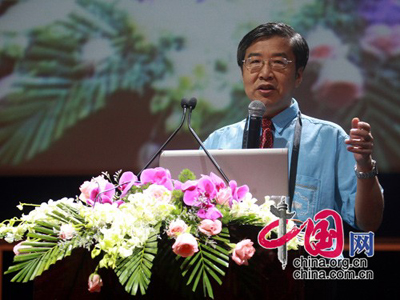|

|
|
Gu Yueguo, research professor of linguistics, Chinese Academy of Social Sciences; Pro-Vice-Chancellor, Beijing Foreign Studies University |
The written Chinese, as of writing, is as old as 3,400 years. Nowadays Chinese is also widely used in radio, television, mobile, and the Internet. This paper presents a way, to be called an ecological model, in which Chinese, old and young, can be effectively modeled. A distinction is drawn between 4-borne discourses, viz. land-borne situated discourse (LBSD for short), air-borne situated discourse (ABSD for short), Web-borne situated discourse (WBSD for short) and Written Word-borne discourse (WWBD for short). LBSD is the oldest mode of discourse, that is it has the longest life cycle, whereas WBSD is the youngest, with WWBD being the second oldest, and ABSD the third. The 4-borne discourses are shown to have contributed to the maintenance and reproduction of the Chinese culture in general and Chinese language in particular. This approach to Chinese is built on a conviction that language should, first and foremost, be examined as it being lived. Philosophically it is rooted to sociological phenomenology, particularly that conceptualized by Schutz. It is also related to Wittgenstein who writes: "Our language can be seen as an ancient city: a maze of little streets and squares, of old and new houses, and of houses with additions from various periods; …"
The model will be shown to be viable for knowledge engineering in machine translation and interpretation.
(China.org.cn August 5, 2008)